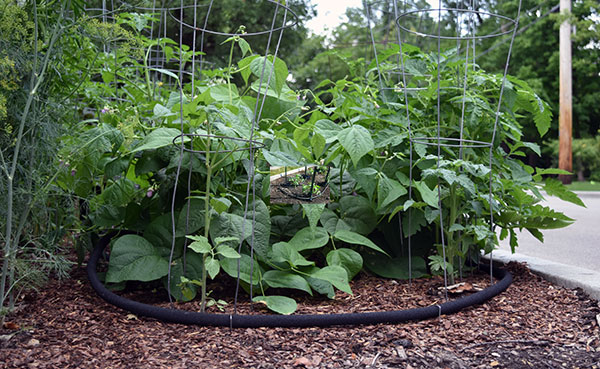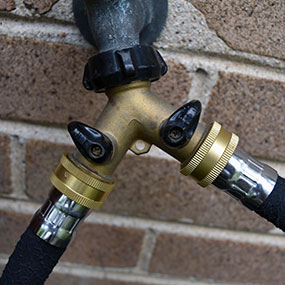Tomato Talk
A Full Season of Tomato-Growing Information
Watering tomato plants
There are many factors that go into how often you water your tomato plant: the age and size of the plant, the weather (temperature and rainfall), and whether your plant is in a pot or the ground.

Using soaker hoses gives water right to the roots and keeps moisture off your tomatoes' leaves, helping to avoid fungal problems and viruses.
Here are a few rules of thumb you can use to guide your watering:
Water regularly. Consistent watering produces stronger plants and larger fruit. In the height of summer, water two to three times a week. (Rainfall counts.) Later, when temperatures cool, scale back to once a week. But…
Avoid overwatering. Check the soil with your fingers. If it’s dry 3 – 4 inches down, it’s time to water.
Water at the soil line and avoid overhead watering, which spreads diseases. A flexible drip hose is a good choice.
Water slowly. Let water sink into the ground to help plants develop strong root systems. When the soil surrounding your tomato plant is moistened 6 – 8 inches deep, you’ll know you’ve done your job well.
Check pots more often. Potted plants require more attention. They need watering more often than in-ground plantings, especially when they're in full sun in hot weather. Check tomatoes in pots every morning and evening in midsummer heat.
Tips for using a soaker hose:

A splitter attachment for your spigot can divert water to two (or more) hoses, while also controlling water pressure.
Use shorter hoses, and more of them. Even if your home can supply water pressure over great distances, it's just too difficult to distribute water evenly with a hose longer than 100 feet. Plants at the end of the hose will get very little water; plants at the source will get swamped.
Use a hose splitter. This can help you "throttle" the amount of pressure going into a hose line. The switches on the splitter control the pressure of water going in to each line. Lower pressure means the water will be spread evenly throughout the line. Using both splitter connections and two hoses in a bed can be very effective.
Cover your hose. A light cover of mulch or straw can help with evaporation. Adding plants to the bed later in the season? Make sure you uncover your hose before digging.

